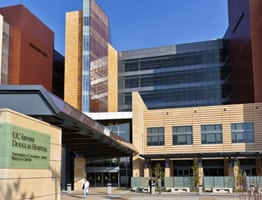
Undescended Testicles in Newborn Boys
During the last few months of pregnancy, the testicles of soon-to-be-born males normally move lover into the abdomen and down to the pouch just below the penis, known as the scrotum. In some cases, one or both testicles will fail to move into place in the scrotum. When this happens, it’s referred to as an undescended testicle, an abnormality also called cryptorchidism.
While more common in prematurely delivered boys, it can occur in any newborn male. The testicle that hasn’t descended usually does so within the first six months of life. If this doesn’t happen, surgery is usually necessary.
Possible Causes
There is often no clear reason why a testicle sometimes fails to move into its proper position before birth. It’s believed that the abnormality may have something to do with genetics or outside influences that could affect hormones and other biological processes during pregnancy. In some instances, a blockage occurs that prevents a testicle from descending. Cryptorchidism may also occur in boys born to mothers who:
- Are significantly above their normal weight
- Have either preexisting issues with diabetes or develop it during pregnancy
- Consume alcohol or smoke during pregnancy
Certain inherited genetic defects could also play a role in the odds of having a boy born with this abnormality. Additional contributing factors may include Down syndrome and similar conditions that can have an impact on fetal development.
Some boys have what’s termed a retractile testicle that moves back and forth from the groin to the scrotum. If this happens, it may be assumed that both testicles have descended normally during an initial examination after birth. In rare cases, a testicle that did descend into place will go back into lower abdomen or groin. It’s not clear why this happens.
Signs of a Problem
The most common sign of an undescended testicle is not being able to feel one during normal cleaning or bathing routines. Other times, the scrotum may appear smaller in size and shape than what’s considered normal, or one side may appear flat. If not diagnosed and treated, an undescended testicle may increase the odds of developing testicular cancer or having fertility problems.
Making a Positive Diagnosis
The problem is usually detected shortly after birth or during regular pediatric exams. The diagnostic process typically includes eliminating other possible conditions such as ectopic testicles that didn’t fall into place or retractile testicles that are moving in and out of their correct position. A laparoscopy may be done to locate the undescended testicle. It’s a procedure involving a small incision in the lower abdomen. With some boys, open exploratory surgery may be necessary to locate the testicle and identify any related issues.
Treatment Options
If an undescended testicle is discovered at birth, the only “treatment” is usually periodic observation to see if the affected testicle naturally moves into the correct position. When surgery is necessary, it’s usually a procedure called an orchiopexy that involves manipulating the misplaced testicle and sewing it into the correct position to prevent it from moving again. An alternative treatment recommendation is the use of hCG (human chorionic gonadotropin) hormones to induce testicle movement if surgery isn’t fully successful.









